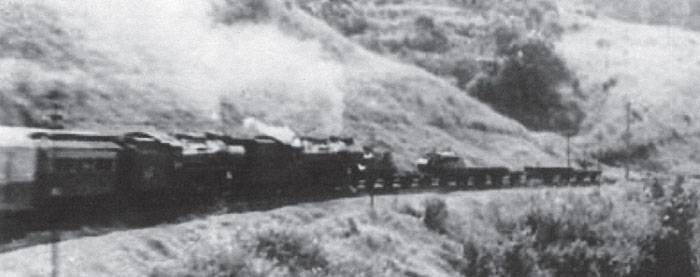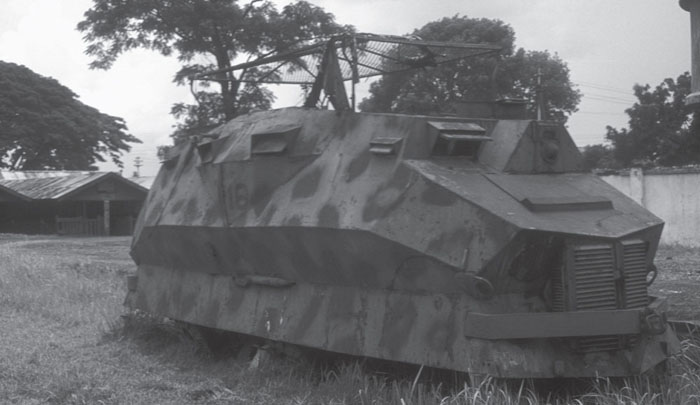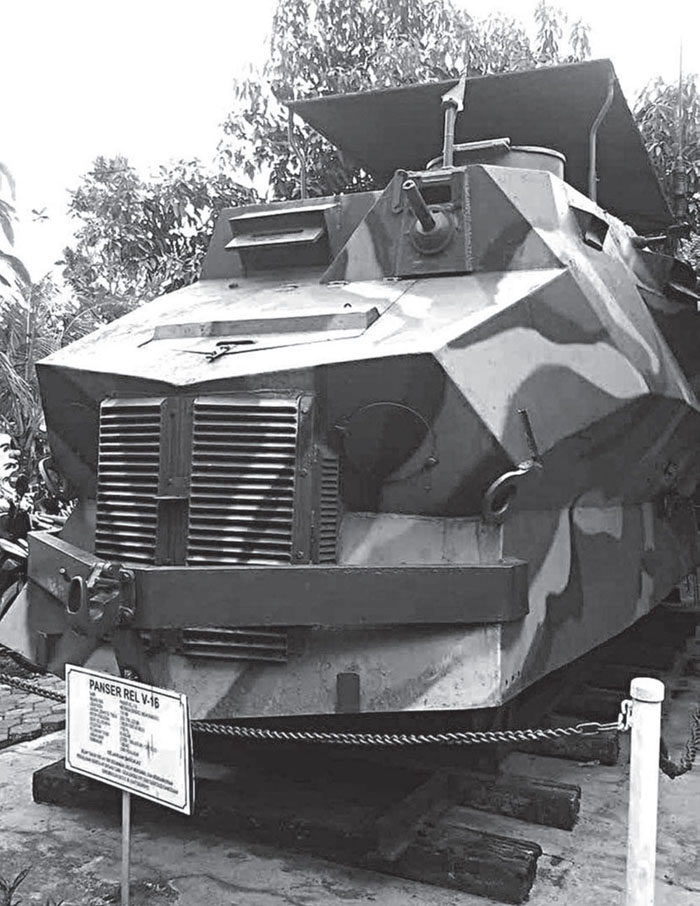
Although the country unilaterally declared its independence from the Netherlands on 17 August 1945, formal recognition was not granted until 27 December 1949. The defence of the railway network during these four years is covered in the chapter on the Netherlands.
Newly-independent Indonesia suffered from several years of separatist agitation, notably in the south of Sumatra in the years 1951 to 1953. Armoured wagons accompanied the trains, and it appears that Dutch trolleys were put back into service, which would explain why several examples are displayed in Indonesian museums.
SOURCES:

A train double-headed by two 2-10-2 Type D52 engines, propelling two flat wagons carrying the hulls of BRAAT armoured trolleys, on a line in the south of Sumatra in the years 1951–3.
(Photo: All Rights Reserved)

This Panser Rel V16 armoured trolley has an aggressive and elegant appearance. It was constructed by joining two BRAAT (second version) vehicles together back-to-back. Traces of the original camouflage survive under the patches of rust on this vehicle parked out of service in a station. A restored example (perhaps the same vehicle) is now on display in the Bandoeng Museum.
(Photo: Tony Ford)

The Panser Rel V16 (perhaps from the designation of the motor) on display at Bandoeng in a new paint scheme. This vehicle measures 5.20m (17ft 03/4in) long and weighs 7 tonnes.
(Photo: http://www.kaskus.co.id)